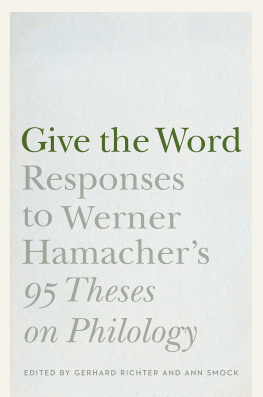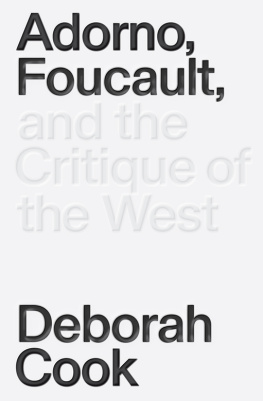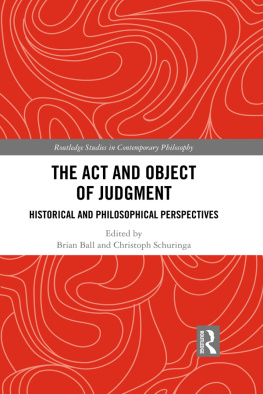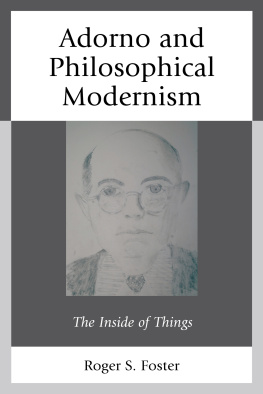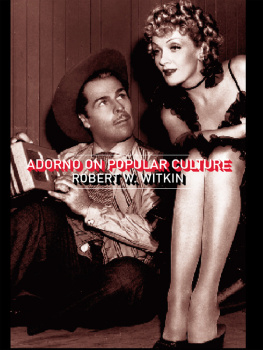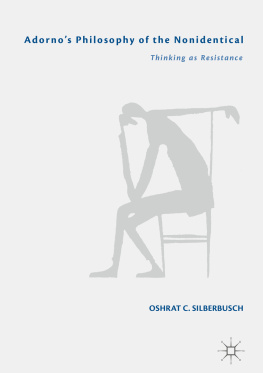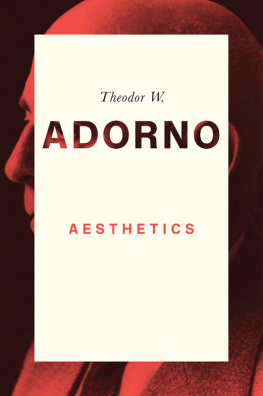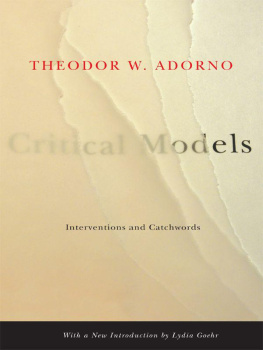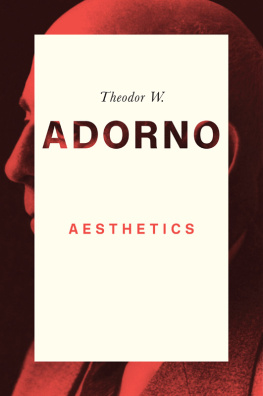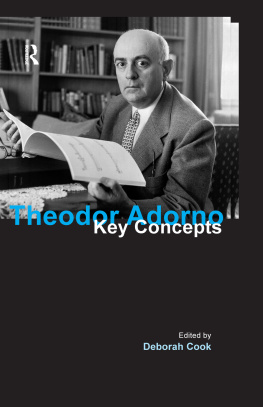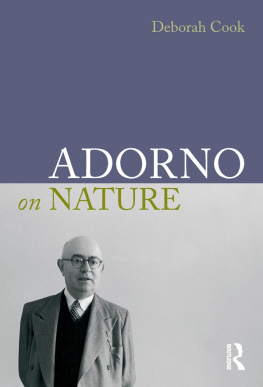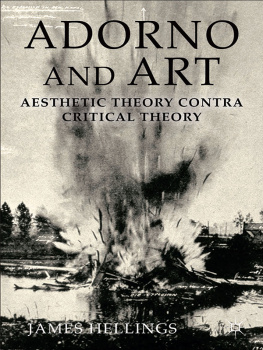CONTENTS
Guide
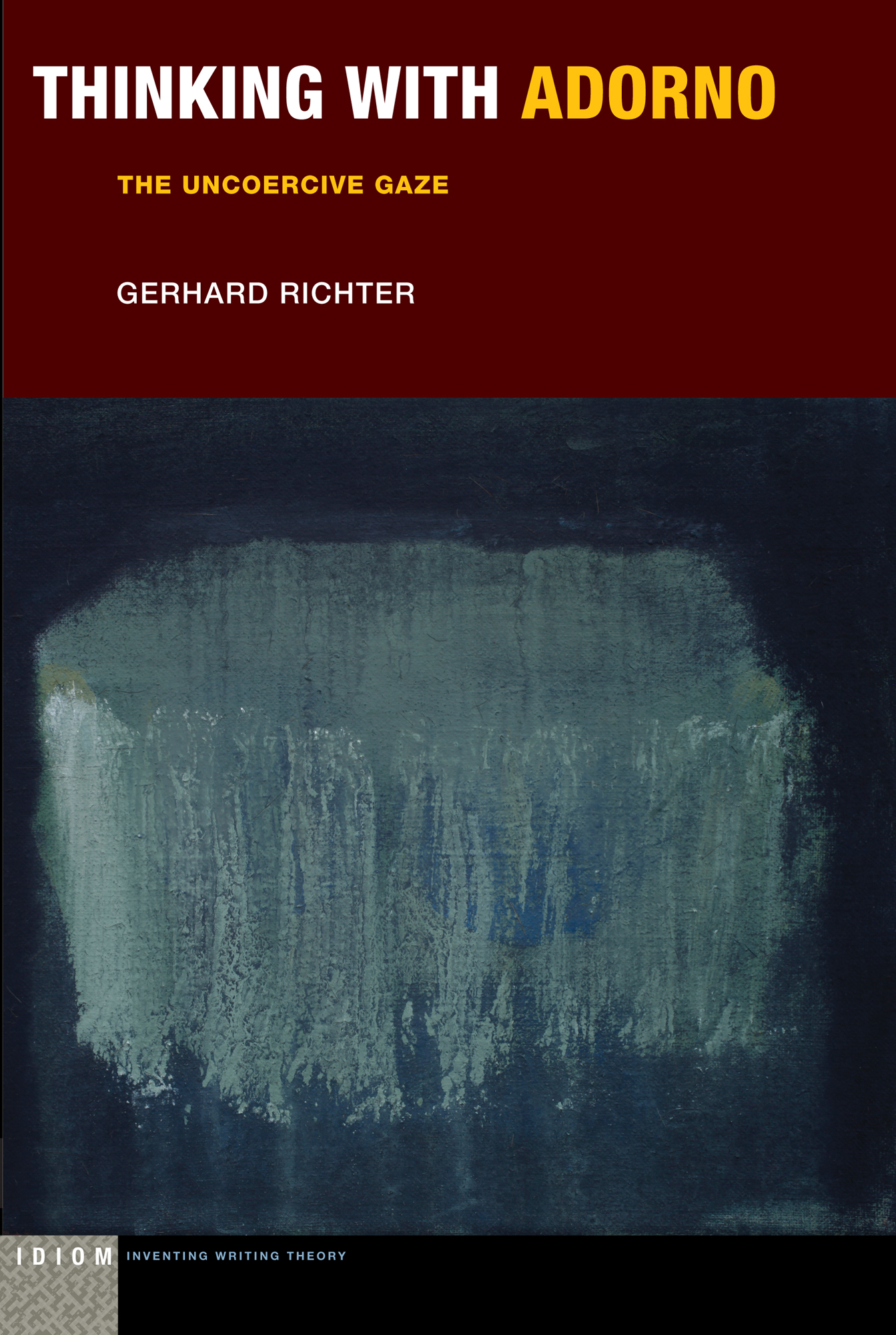
Thinking with Adorno
IDIOM INVENTING WRITING THEORY
Jacques Lezra and Paul North, series editors
Gerhard Richter
Thinking with Adorno
THE UNCOERCIVE GAZE
FORDHAM UNIVERSITY PRESS NEW YORK 2019
Fordham University Press gratefully acknowledges financial assistance and support provided for the publication of this book by Brown University.
Copyright 2019 Fordham University Press
All rights reserved. No part of this publication may be reproduced, stored in a retrieval system, or transmitted in any form or by any meanselectronic, mechanical, photocopy, recording, or any otherexcept for brief quotations in printed reviews, without the prior permission of the publisher.
Fordham University Press has no responsibility for the persistence or accuracy of URLs for external or third-party Internet websites referred to in this publication and does not guarantee that any content on such websites is, or will remain, accurate or appropriate.
Fordham University Press also publishes its books in a variety of electronic formats. Some content that appears in print may not be available in electronic books.
Visit us online at www.fordhampress.com.
Library of Congress Cataloging-in-Publication Data available online at https://catalog.loc.gov.
CONTENTS
Thinking with Adorno
Let us begin with an interruption, an interruption that will have marked a beginning even as it also marks the end of a life, so that the acts of beginning and ending no longer appear as mere oppositional poles in the world of thought and experience. When, in spring 1969only months before his unexpected death in August of that same yearTheodor W. Adorno is interviewed at length by the influential German news magazine Der Spiegel, the reporter commences the conversation by alluding to the tensions between Adorno and the student movement that recently had escalated and caused the philosopher to cancel his lecture course at the University of Frankfurt. Professor Adorno, the journalist begins, two weeks ago, the world still seemed in order. At which point Adorno interrupts him by interjecting: Not to me [Mir nicht].
Adornos dry Mir nicht here cannot be reduced to a kind of Frankfurt School version of Melvilles Bartleby, who remains in our literary consciousness as the voice of the I would prefer not to. After all, what on one level can be taken as a witty retort by an embattled philosopher in the less-than-reflective environment of the public arena appears on another level as the subtle expression of one of his abiding theoretical commitments. For Adorno, there can be no genuine thinking, and certainly no thinking that shows itself responsible to the rigors of what he names a negative dialectics, that does not also attempt to take into account the genealogy of Yet precisely in relating to its own undead pasta past that has neither simply passed nor resides in the past, but rather has passed on and is alive at the same timeand in attempting to give an account of itself to itself, this thinking is eminently future-directed. Just as for the Heidegger of Was heit denken? we are still not thinking, for Adorno the thinking that may call itself genuine is still to come. Whatever it will have been, it is a thinking that also thinks against itself and, always dissatisfied with its own premises and movements, calls upon the one who thinks to reimagine what such inherited terms as critique, world, dialectic, progress, culture, or, as so often in Adorno, after Auschwitz, might demand of us. Such thinking could not deny its own disaster, the fact that the catastrophe that it wishes to theorize has always already occurred and, in fact, continues today. In response to any theoretical point of view that postulates thinking in relation to a prelapsarian world or to an imagined former state of achieved reconciliation, Adorno can only answer: Mir nicht.
An altogether different kind of thinking thus appears to be required. What such a mode of thinking might entail is the topic of this book. My study attempts to give an account of the ways in which Adorno, beyond the confines of any of the particular subject matters on which he so often trains his critical gaze (among them, prominently, questions of aesthetics and cultural criticism, epistemology, the philosophy of history, moral and political philosophy, musicology, and literary theory), teaches us how to read, how to relate the texts and topics that concern us most urgently at any given moment to other texts and topics, how to question, and how to fashion a genuinely open yet uncompromisingly vigilant comportment toward the objects of ones inquiry.
For Adorno himself, attempting to ascertain what such a comportment toward the objects of ones inquiry and ones intellectual and artistic creativity might entail was a lifelong task. One thing that it entails is the demand to take seriously the wish not to decide, at least never prematurely. Let us consider a concrete example. In addition to being a philosopher, sociologist, musicologist, political theorist, and literary and cultural critic
In recent years the older scholarship on Adorno has been supplemented by fresh perspectives on a number of key aspects of his multifaceted oeuvre, providing us with heterogeneous new vistas onto Adornos concerns. My particular aim in the present book, however, is to probe the very strategies of Adornos reflections, the incommensurate and singular manner in which his ways of thinking self-consciously work to forge a dynamic relationship between thought and the objects of its inquiry, a critical and intimate process by which thinkingand, by extension, the thinking of thinkingfirst comes to constitute itself.
At the beginning of his most significant and conceptually sustained book of philosophy, Negative Dialectics, Adorno recounts a remark addressed to him in 1937, some three decades earlier, by his friend and former mentor Walter Benjamin. One must, Benjamin said after having read a text by Adorno, traverse the ice-desert of abstraction [Eiswste der Abstraktion] in order conclusively to reach concrete philosophizing. Given that Benjamins trenchant remark remained with Adorno for so many years, one may wonder what it is in the experience of this ice-desert that continues to shape our engagement not only with Adornos conceptsthe elements of his concrete philosophizingbut also with his particular style of thinking and the language in which his concepts come to pass. The constellation of words and strategies of reflection that we so intimately connect with the signature, even the singularity, of Adornos thinking continues to make him one of the few figures in the critical field whom we can never do without.
Contrary to widely held belief, Adorno considered problems of language, and issues of presentation (Darstellung) more generally, to be of the highest significance for his theoretical enterprise, evenand especiallyin those textual precincts where this enterprise may appear to be concerned exclusively with the development of concepts or with the generation of propositional truth claims. Although he never composed a fully developed treatise exclusively devoted to the topic, he does emphasize, at key moments reconstruct something like Adornos philosophy of language or theory of presentation. Rather, I seek to illuminate and submit to scrutiny some of the heterogeneous ways in which his refractory view of language, along with the particularities of his style of thinking, reading, and writing that this view sponsors, make themselves felt in the concrete praxis of specific moments and conceptual movements in his theoretical work.


